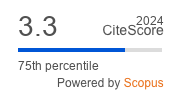Article | Open Access
Educational Attainment and Gender Differences in Work–Life Balance for Couples across Europe: A Contextual Perspective
| Views: | 4916 | | | Downloads: | 2133 |
Abstract: The current article aims to explain the interrelationships between the educational attainment of individuals living in households with heterosexual partners, their work–life balance (WLB) and the macro-economic climate of the country they live in, using data from the European Social Survey. WLB is a complex concept, as it is not only determined by factors related to someone’s employment or domestic work and childcare responsibilities, but also by decisions informed by personal experiences and circumstances, subjective perceptions and preferences. Moreover, in households with cohabiting partners, this decision-making process involves certain compromises where financial incentives, interests, gender and power dynamics play an important role. Since educational attainment is positively related to labour market outcomes, such as employment and wages, while at the same time more women are participating in education and the labour market, the gender conflict on the division of work and time within households intensifies and traditional gender roles are challenged. WLB is at the heart of this conflict operating as a mechanism through which division of work and time is reconciled on the individual and household level. Results from the current article reveal great heterogeneity between the 17 European countries examined. Perhaps surprisingly, educational attainment can have a detrimental effect on the WLB of spouses and cohabiting partners, especially for women whose level of WLB seems also more sensitive to fluctuations of the macro-economic climate of the country they live in. However, there is an indication that when an economy goes into recession, higher education has a cushioning effect on female’s WLB compared to relatively better economic times.
Keywords: division of labour; dual-earner households; gender inequalities; job quality; work–life balance
Supplementary Files:
Published:
© Theocharis Kromydas. This is an open access article distributed under the terms of the Creative Commons Attribution 4.0 license (http://creativecommons.org/licenses/by/4.0), which permits any use, distribution, and reproduction of the work without further permission provided the original author(s) and source are credited.


